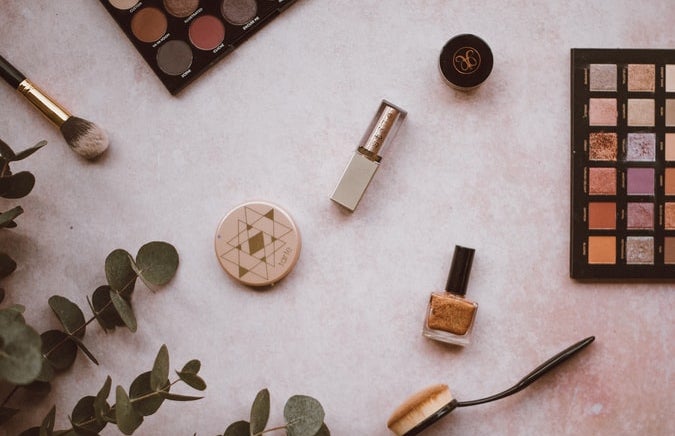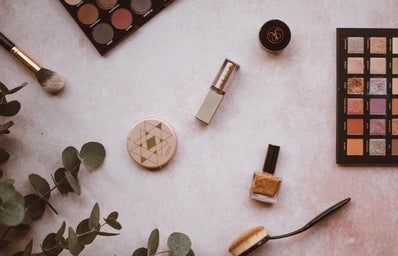It’s a weird feeling when you’re shopping for beauty products at Sephora and you turn the corner and see… ten-year-old girls? This recurring pattern of young girls shopping for beauty products like Drunk Elephant has sparked online discussions and controversies, especially when it comes to what the parents are doing in these circumstances. Not only are kids flocking to big makeup stores, but they’re also leaving a mess trailing behind them and have observed to be rude toward employees.
Sephora and Ulta employees have shared their experiences with young girls visiting their stores through social media, and one employee, @Natsodrizzy, posted a TikTok of how a young girl’s total rung up to $900.00. When the mother wasn’t happy with the cost and requested to take one product out, the kid argued back, leading to a very awkward exchange. While it’s shocking that a young girl would desire 900 dollars’ worth of products, Natsodrizzy highlighted the fact that it’s “crazier how the parents aren’t parenting.”
It’s true that parents are partly to blame for their kids’ behaviors, as many women at Sephora have observed that the children’s parents are nowhere in sight, allowing their kids to roam about freely and do what they want. They are not being taught about accountability nor are they aware that the majority of the products they want are actually damaging to their skin. Parents are supposed to pose as role models for their children, and without their guidance, they’re going to seek it from other external places — and what’s the most common space to get information fast? Social media.
The additional social pressure to consume beauty products has always been prevalent within our society. This pressure is spurred on by toxic beauty standards and capitalistic values to constantly buy products to fix physical “flaws” deemed unattractive by social hegemonies. All of these issues surrounding beauty is heavily exacerbated by social media, as platforms like Instagram and TikTok have become spaces where anti-aging rhetoric and the advocation for achieving unhealthy beauty standards are rampant.
Dermatologist, Dr. Anjali Mahto, shared her concerns regarding this trend by stating, “Most have been heavily influenced by social media and influencers who are showing their in-depth routines, most often accompanied by luxury skincare brands. There is often an unhealthy focus on anti-aging too, despite their young age.”
Whether it be from promotions by popular influencers or from the constant beauty commercials and ads online, young girls are always surrounded with messages to buy more and more products. These types of consumerist messages are easily obtainable for kids because parents are also allowing unlimited access to the internet, granting quick entry into the toxicity that is social media. In addition, there’s also pressure to conform alongside one’s friends. When almost everything around you pushes for these types of standards, it’s easy to follow suit, especially with the absence of good parenting.
Alongside these problems lies another key idea that’s been visible throughout the generations is this desire to appear older while retaining one’s youthfulness at the same time. The term KGOY or “kids getting older younger” developed initially as a marketing tactic, but now, with the rise of social media reaching young audiences, it’s become relevant to both, especially when it comes to gender roles and consumerism.
Sociology teacher Trever Zahn also emphasizes how technology impacts this idea of “growing up” fast, stating, “In looking at my upbringing, social trends took longer to take hold because magazines came out in a more limited format and it wasn’t just posted online, which can happen at a moment’s notice.”
With aid from social media, KGOY among girls in particular revolves around desire, because “as long as a woman’s worth somewhat relies on how well she can be desired, they will continue to follow trends that make them feel desirable.” Gendered pressures are gaining more visibility through platforms like TikTok, and it’s only contributing to the misplaced emphasis on meeting beauty standards created by patriarchal society.
KGOY phenomenon has also led to the end of the “tween” era — the stage where you’re not a kid anymore but not yet a teen. This is a period where a person is still figuring out their identity and developing their interests, hobbies, and even their sense of style. However, this awkward stage has gradually diminished, as young girls are being influenced by mass trends online when it comes to appearances. Many people have taken their concerns to the end of the tween phase as a result of the rise of the Sephora girls, recalling their own experiences as a tween.
“We had pre-teen stores…and even shows catered to us. This generation, they do not have that,” @lalalamimilo commented on the Sephora girls trend. What’s marketed toward older women are now reaching younger audiences, and these clearly cut phases of growing up are slowly becoming homogenized.
There are so many societal pressures that have contributed to the Sephora girls trend, and it’s also important that we look at the parents who are allowing their kids access to these online trends. With proper guidance, young girls can learn that chasing after beauty isn’t everything and that they should feel free to experience their childhood in the fullest.


